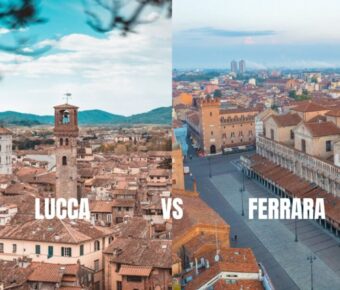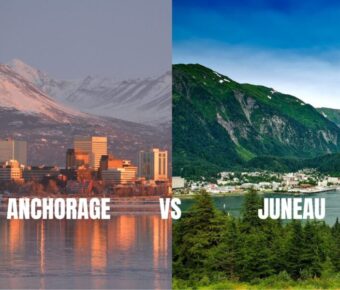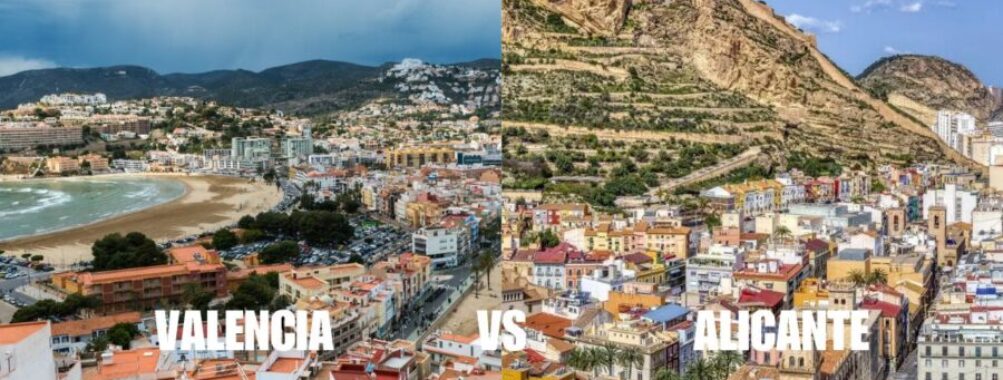
Valencia vs Alicante: 7 Key Differences Every Traveler Must Know
Choosing between Valencia and Alicante isn’t just a matter of picking a dot on the map — it’s about what you want your days to feel like. If you’re after a city that’s always buzzing, packed with culture, and full of contrasts, Valencia’s probably your jam. If you want a slower pace, the beach right outside your door, and a more personal vibe, Alicante might just win you over.
I’ve spent time in both, and honestly, the difference is obvious the minute you arrive. In Valencia, you’ll wander from Gothic alleyways into futuristic buildings, then end the night in a noisy tapas bar.
Alicante mornings start with coffee by the marina, maybe a stroll to the beach, and if you’re feeling ambitious, a climb to the castle for those killer views. No rush. No stress.
You’ll want to pack light and smart — the right travel gear makes exploring either city so much easier. And hey, with a quick train ride between them, you really don’t have to pick just one.
Table of Contents
- Key Takeaways
- Overall Atmosphere and Vibe
- City Size and Layout
- Local Culture and Traditions
- Best Time to Visit
- Top Attractions and Landmarks
- Historic Sights in Valencia
- Must-See Places in Alicante
- Modern Architecture in Valencia
- Food Scene and Culinary Experiences
- Signature Dishes in Valencia
- Seafood and Rice Specialties in Alicante
- Best Places to Try Paella
- Beaches and Outdoor Activities
- Urban Beaches Comparison
- Day Trips to Tabarca Island
- Parks and Nature Escapes
- Nightlife and Entertainment
- Valencia’s Nightlife Hotspots
- Alicante’s Party Districts
- Annual Festivals and Events
- Cost of Living and Travel Expenses
- Accommodation Price Comparison
- Dining and Nightlife Costs
- Transportation and Getting Around
- Living in Valencia vs Alicante
- Expat Communities and Lifestyle
- Climate and Quality of Life
- Education and Family Friendliness
- Frequently Asked Questions
- What are the key differences in living standards between Valencia and Alicante?
- Which city boasts better beaches for tourists, Valencia or Alicante?
- How does the climate compare between Valencia and Alicante throughout the year?
- Considering family-friendly activities, which is more suitable for children, Valencia or Alicante?
- What are the transportation options when traveling from Valencia to Alicante?
- How do cultural experiences differ between Valencia and Alicante?
- Book Your Dream Experience
- More Travel Guides
Key Takeaways
- Valencia’s got that big-city buzz and a wild mix of things to do
- Alicante’s all about the laid-back coastal lifestyle and easygoing beaches
- They’re close enough that you can squeeze both into a single trip
Overall Atmosphere and Vibe
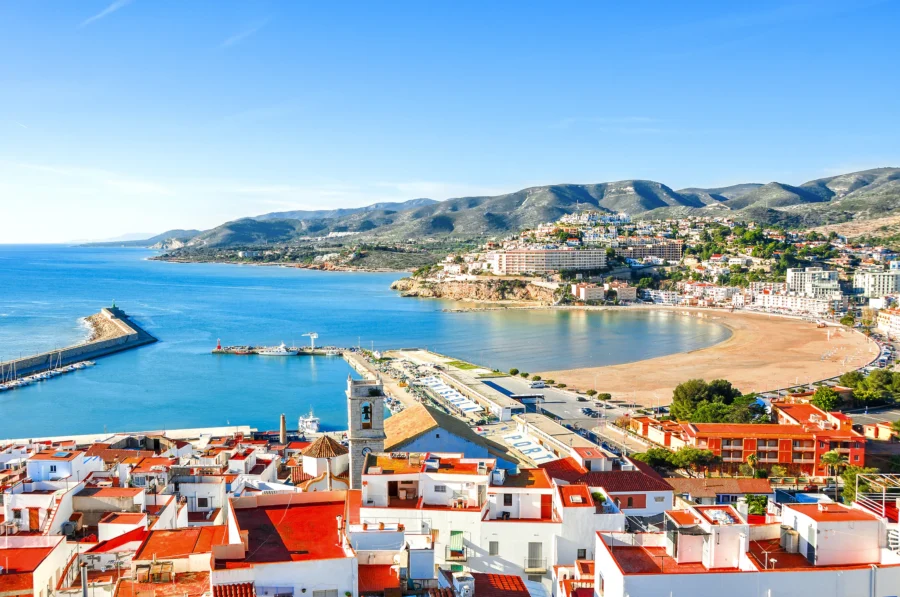
Valencia moves fast — you feel the energy in the streets, the plazas, even the way people talk. Alicante? It’s got that slower, by-the-sea rhythm that makes you forget about your watch.
Both cities have their own kind of magic, shaped by their size, layout, and the way locals celebrate life.
City Size and Layout
Valencia is Spain’s third-largest city, and you’ll notice the scale right away. Wide boulevards, sprawling neighborhoods, and a skyline that mixes ancient towers with shiny modern stuff — it feels huge.
You’ll probably need public transport or a bike unless you’re a real walker.
Alicante’s way more compact. You can stroll from the central market to the beach in under ten minutes, and the castle climb is right there in the middle of town.
If you like to wander without a plan, Alicante’s tight layout makes it easy to stumble into tiny plazas, local bars, or a hidden viewpoint. In Valencia, you’ll cover more ground, and each district feels like its own little world.
Local Culture and Traditions

Valencia’s cultural life is all over the place — in the best way. There are top-tier museums, the sci-fi Ciudad de las Artes y las Ciencias, and the old-school El Carmen neighborhood.
Las Fallas in March? Total chaos, in a good way — sculptures, fireworks, crowds that don’t sleep.
Alicante’s traditions stick closer to the sea. Hogueras de San Juan in June is the big one — bonfires on the beach, parades, and the burning of wild wooden figures.
It’s festive but feels more intimate than Valencia’s madness.
Valencia feels like a cultural hub where art, music, and food collide on a big stage. Alicante’s got that small-town warmth — you’ll probably see the same café owner every morning.
Best Time to Visit
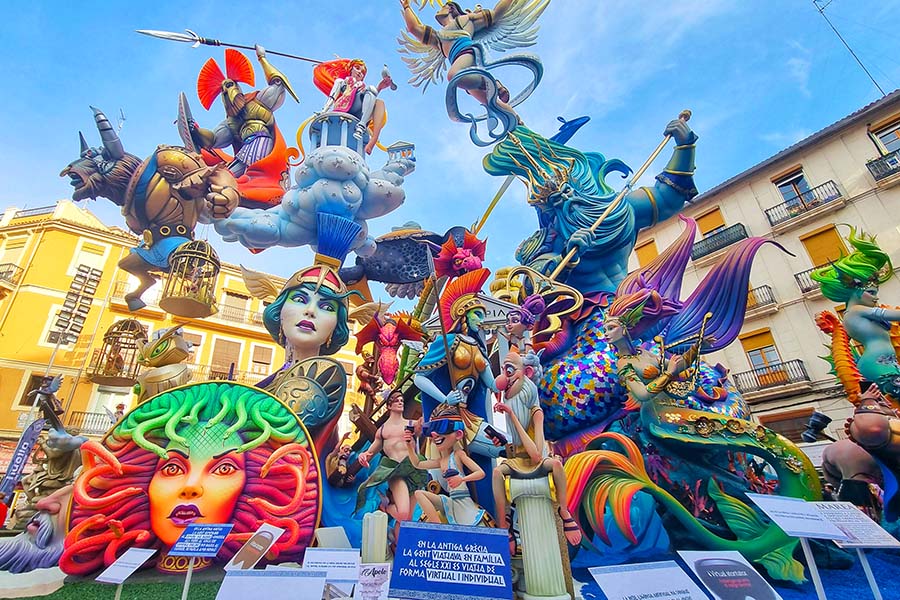
Valencia stays lively all year, but spring and early autumn are my favorites — warm weather, fewer crowds, lots of stuff happening. March is wild if you want to see Las Fallas, but brace yourself for higher prices and packed hotels.
Alicante really shines in late spring and early summer. June brings Hogueras, but even outside festival time, the weather’s perfect for the beach and it’s not mobbed.
Both cities get seriously hot in July and August. Valencia’s heat can feel heavier since it’s a bit inland, while Alicante gets more breeze off the sea.
If you hate melting, aim for April–June or September–October for the comfiest weather.
Top Attractions and Landmarks
Each city has sights that really set the tone. In one, you’ll get lost in centuries-old streets; in the other, you can walk from the beach to a castle in half an hour. And somewhere in between, you’ll find architecture that looks like it landed from another planet.
Historic Sights in Valencia
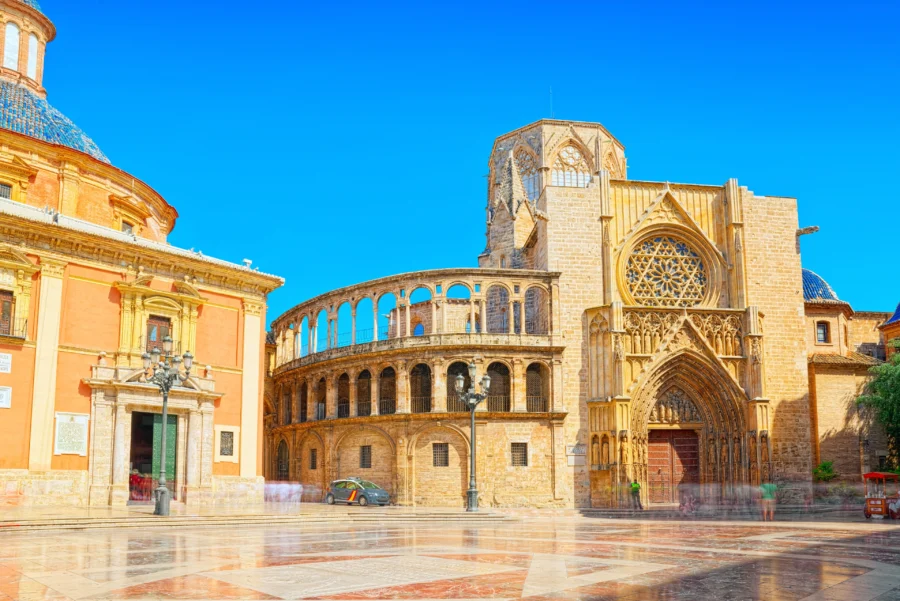
If you’re a history nerd (no shame), Valencia’s old quarter is a maze you’ll want to get lost in. The Valencia Cathedral is a must — not just for the wild mashup of Gothic, Romanesque, and Baroque, but for the climb up the Miguelete tower.
The view up there? Totally worth the effort.
Wandering El Carmen, you’ll find medieval walls, quiet plazas, and even Roman ruins hiding between coffee shops. It’s the kind of place you keep stopping for photos.
Don’t miss the Lonja de la Seda — a UNESCO-listed silk exchange that’s just as impressive inside as it is outside. The Central Market is right across the street, so grab a snack and soak up the Art Nouveau vibes.
Must-See Places in Alicante
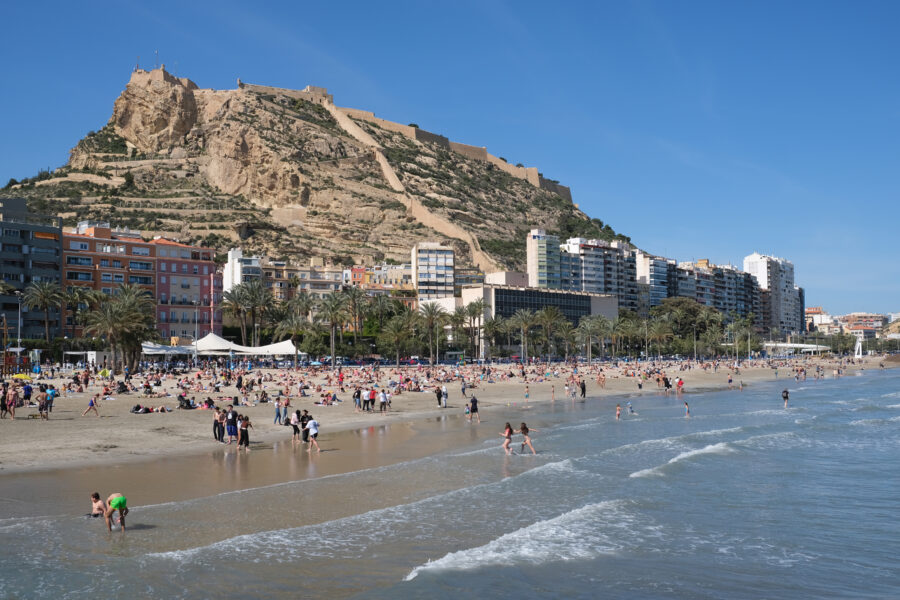
Alicante’s Castillo de Santa Bárbara stands over everything. You can hike up through the Santa Cruz neighborhood or just take the elevator from the beach.
The views stretch all the way across the Costa Blanca, and on a clear day, you might even spot Tabarca Island.
Down in the Old Town, El Barrio is a tangle of narrow streets, colorful houses, and little tapas bars. It’s buzzing at night but still charming in the daylight.
If you need a breather, stroll the Explanada de España — a palm-lined promenade with those hypnotic wave-patterned tiles.
And the beach? Playa del Postiguet is steps from the center. You don’t need to plan a whole day; you can just pop down whenever.
Modern Architecture in Valencia
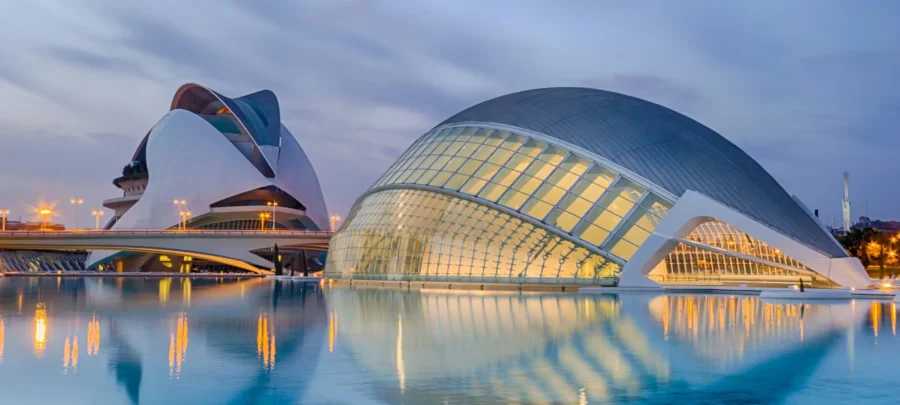
Valencia’s City of Arts and Sciences is one of those places that makes you stop and stare. Santiago Calatrava designed it, and the complex has the Hemisfèric (IMAX), Museu de les Ciències, and the Oceanogràfic, which is apparently Europe’s biggest aquarium.
The white curves and glass reflect in the pools — it’s especially gorgeous at sunset. Even if you skip the museums, just walking around is an experience.
It sits right on the old Turia riverbed, now the Jardín del Turia park. That park is perfect for a bike ride or a lazy walk, and you can easily combine it with a city tour to see how Valencia blends old and new in a single afternoon.
Food Scene and Culinary Experiences
Spain’s east coast gives you two food personalities just a short train ride apart. Valencia digs deep into rice dishes and old-school traditions, while Alicante leans lighter and more coastal.
Both cities love fresh ingredients, but the results on your plate are totally different.
Signature Dishes in Valencia

You’ve probably heard of paella, but the real Valencian version isn’t the seafood bomb you get everywhere else. It’s usually chicken, rabbit, sometimes snails, plus beans and whatever veggies are in season.
People here get serious about how they cook it — wide, shallow pans, open flame, and no one dares stir the rice once it’s going.
You’ll also spot arroz al horno (baked rice with pork ribs and chickpeas) and fideuà, which swaps rice for noodles and usually comes with seafood.
Freshness is an obsession. Locals still shop at Mercado Central in the morning and cook at home for lunch.
And if you ever get invited to a family paella, drop everything else.
Seafood and Rice Specialties in Alicante
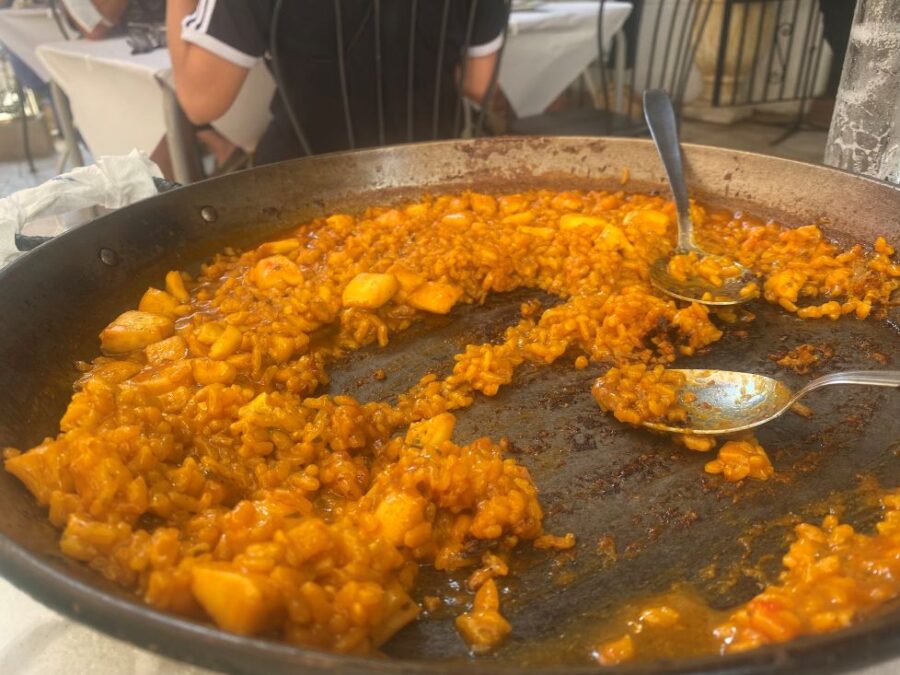
Alicante’s food feels more laid-back but still packs a punch. The city is famous for arroz a banda, a rice dish cooked in fish stock, served with aioli.
It’s rich, savory, and somehow perfect after a lazy morning at the beach.
You’ll also find caldero, a fisherman’s stew from Tabarca Island, and plenty of grilled fish like dorada and lubina. Tapas culture is strong too — think grilled octopus, salted anchovies, or esgarrat (roasted peppers with salted cod) with a glass of local white.
Markets are smaller than Valencia’s, but that’s kind of the point. You can chat with the shop owner about what’s fresh and walk out with something that was swimming a few hours ago.
Best Places to Try Paella
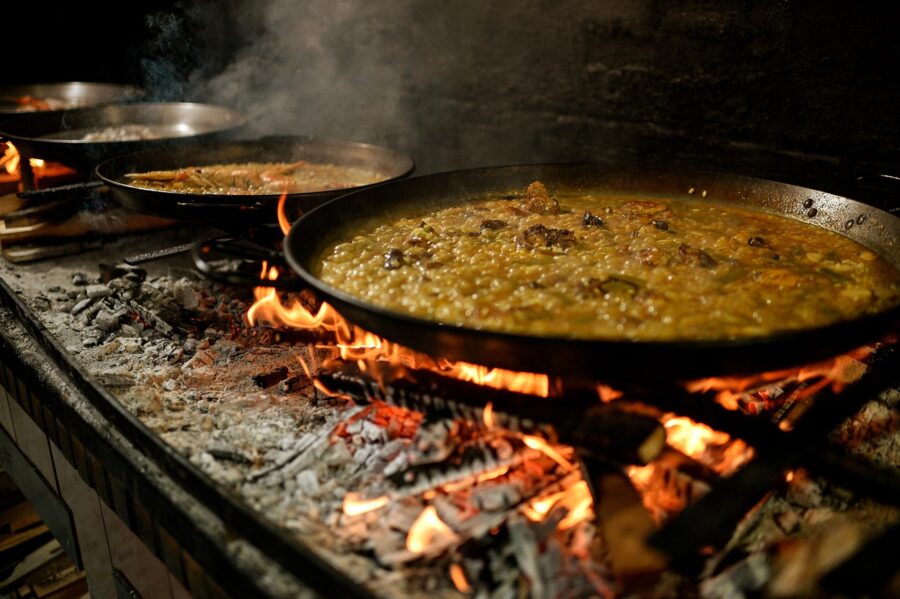
For real paella in Valencia, skip the touristy beach spots unless you know they’re legit. People here swear by Casa Carmela near Malvarrosa Beach or La Pepica, which has been around forever.
For a cheaper, more local vibe, grab a menú del día at a neighborhood joint — you’ll get a hearty serving of paella without the tourist markup.
In Alicante, you’ll find decent paella, but the city’s more about arroz a banda. Try Dársena overlooking the marina.
If you’re up for it, take the ferry to Tabarca for caldero — honestly, it’s worth the detour just for that meal.
Beaches and Outdoor Activities
Valencia’s got long, open beaches with loads of space, while Alicante’s coastline is compact and super easy to reach from anywhere in town.
Both have their own groove — Valencia’s got variety and action, Alicante’s all about convenience and charm.
You’ll also find nearby islands, nature parks, and walking trails if you want to mix things up.
Urban Beaches Comparison
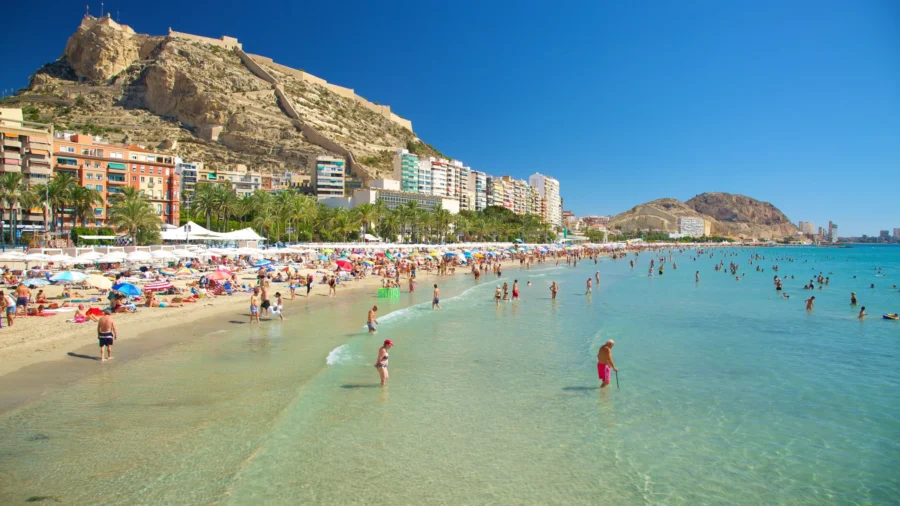
If you love the idea of rolling out of bed and being on the sand in ten minutes, Alicante wins. Playa del Postiguet is right by the marina, with calm water and Mount Benacantil as a backdrop.
You can grab a coffee on the Explanada de España and be swimming before your cup goes cold.
Valencia’s Malvarrosa Beach is way bigger, with golden sand and a lively boardwalk lined with restaurants.
You’ll see more sports here — volleyball, paddleboarding, and even outdoor dance classes sometimes.
For quieter sand in Valencia, head north to Playa de la Patacona — fewer crowds, especially on weekdays. In Alicante, Playa de la Albufereta gives you that more local, tucked-away feel.
| City | Main Beach | Atmosphere | Distance from Center |
|---|---|---|---|
| Alicante | Playa del Postiguet | Relaxed, compact | 5–10 min walk |
| Valencia | Malvarrosa | Active, spacious | 15–20 min by bus/tram |
Day Trips to Tabarca Island
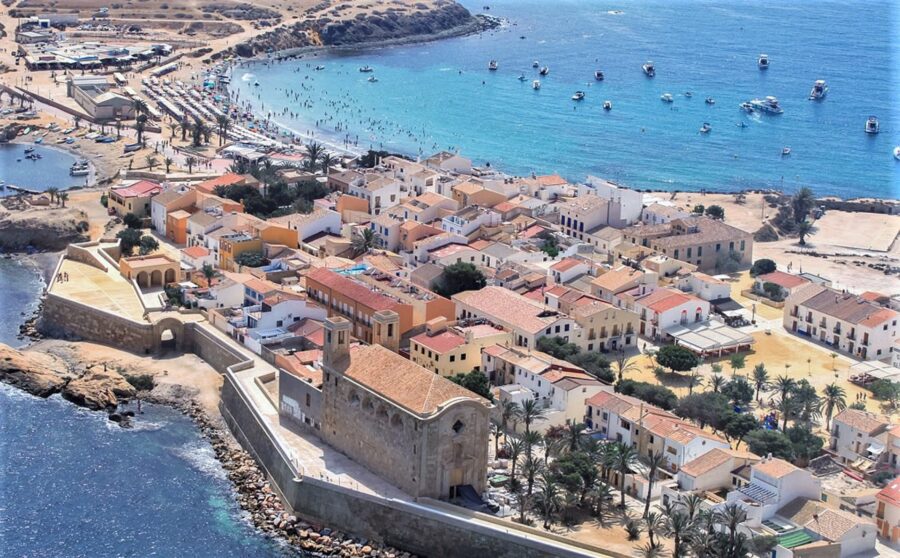
If you’re in Alicante, Tabarca Island is honestly one of the best, easiest day trips around. Ferries zip out from the marina and you’re there in under an hour.
The island’s tiny—you could walk from one end to the other in about 20 minutes. Still, it’s packed with clear coves, old stone houses, and a fishing village vibe that’s almost too laid-back.
Snorkeling? Absolutely worth it. The waters here are protected, so if you bring your mask and fins, you’ll spot tons of fish.
You can’t really get the same quick island fix from Valencia unless you’re up for a long drive or a train ride south. If island-hopping is high on your list, Alicante just makes more sense.
Parks and Nature Escapes
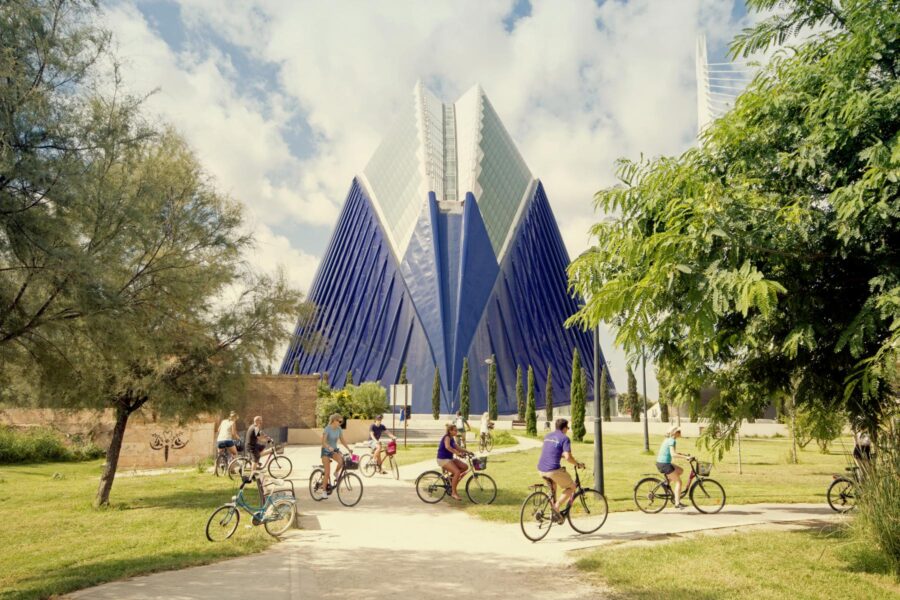
Valencia’s Turia Gardens is a real gem. This park stretches for 9 kilometers along an old riverbed, with bike paths, playgrounds, and plenty of shady picnic spots.
You can cycle from the City of Arts and Sciences all the way out to the Bioparc and never leave the green. It’s wild how much space there is.
Alicante’s green spaces might be smaller, but they’re still a nice break from the bustle. Parque de la Ereta sits on the slopes of Mount Benacantil, giving you killer views of the harbor and a quiet spot to cool off at midday.
If you’re up for a quick trip beyond the cities, Valencia’s Albufera Natural Park is a freshwater lagoon ringed by rice fields. It’s just a short bus ride, and sunset boat trips here are the real deal.
Alicante’s got Serra Grossa and Mount Benacantil nearby—short hikes, pretty steep, but the coastal views are worth every step.
Nightlife and Entertainment
Both cities know how to keep the party going late, but they do it in their own ways. One loves big clubs and all-night terrace parties; the other thrives on walkable bar districts and that chill coastal energy.
Seasonal festivals shake things up—music, fireworks, street parties. You’ll stumble into something fun if you’re out at night, no matter when you visit.
Valencia’s Nightlife Hotspots

If you’re after variety and long nights, Valencia’s got you covered. Nights start late—no one even thinks about dinner before 10pm—and you’ll find people out until sunrise, especially in summer.
Ruzafa is my go-to for cocktails, indie bands, and small clubs. It’s lively, but still feels like a local secret.
El Carmen is all about narrow streets jammed with tapas bars and pubs—perfect for hopping around without a plan.
Want to go big? Marina Beach Club and MYA (by the City of Arts and Sciences) bring in famous DJs. In summer, the beach bars along Playa de la Malvarrosa throw open-air parties where you can dance with your toes in the sand.
I’ve lost track of time in Valencia more than once—just wandering, chatting, and suddenly it’s 4am and I’m still out. That’s the magic here.
Alicante’s Party Districts

Alicante’s scene is more compact, but don’t let that fool you—it’s buzzing. El Barrio Antiguo (the old quarter) is the heart of it, with bars and clubs spilling onto cobblestone streets.
You can walk between most spots in minutes, which makes it easy to try a bunch of places in one night.
Around the marina, you’ll find beach bars with live music, chill cocktail lounges, and a couple of high-energy clubs. Summer nights here stretch into early mornings, especially when the breeze is just right.
If you want something low-key, Alicante’s tapas bars stay open late. I usually grab grilled sardines and a cold beer before heading into the louder spots—no need to rush.
Annual Festivals and Events
Both cities go all out when festival season hits. Valencia’s Las Fallas in March is wild—giant sculptures, fireworks, music, and crowds everywhere. The energy is unreal.
Alicante’s big bash is Hogueras de San Juan in June. Bonfires light up the beaches, parades take over, and the party doesn’t stop until sunrise.
You’ll spot smaller music festivals, outdoor concerts, and cultural happenings all year in both places. If you can time your visit for one, do it. It’s the best way to see the local side of nightlife.
Cost of Living and Travel Expenses
Valencia usually costs a bit more than Alicante, especially for housing and getting around. Alicante’s smaller, but you often get more for your money—and you don’t have to give up much in terms of lifestyle.
Accommodation Price Comparison

Short visits? You’ll see hotel prices in Valencia are higher, especially downtown or near the beach. In Alicante, you can snag a similar room for 10–20% less, easy.
For longer stays, rent is where it really shows. A one-bedroom in Valencia’s center runs about 18% more than in Alicante.
Move out to the edges and the gap shrinks, but Valencia still edges higher.
If you book early, Alicante sometimes has better summer deals, while Valencia’s prices barely budge because tourism’s strong all year. I always check Booking.com before I lock anything in—prices jump around more than you’d think.
Dining and Nightlife Costs
Eating out can be cheap in both cities if you stick to local cafés and menú del día lunches. In Valencia, you’ll pay a bit extra in trendy areas like Ruzafa or El Carmen.
Alicante’s old town keeps tapas prices reasonable, even in high season.
Nightlife? Valencia’s clubs might charge €10 for a cocktail, while Alicante’s usually land around €7–8. Beer’s about €3 in casual spots, no matter where you go.
Valencia’s got more late-night food options, but Alicante’s small size means you can bar-hop on foot and skip the taxi fare. That adds up if you’re out every night.
Transportation and Getting Around
Valencia’s got a bigger public transport system—metro, buses, trams, the works. A single metro ride costs around €1.50–2.00. Alicante’s tram and bus fares are a bit lower.
Renting a car? Parking’s easier and usually cheaper in Alicante, unless you’re right in the old town. In Valencia, parking near touristy spots can get pricey.
Trains between the two cities are quick—under two hours—and if you book early with KAYAK, you can snag a ticket for under €20. Buses are even cheaper, though they crawl a bit.
Both cities are walkable, but Alicante’s compact layout means you’ll probably spend less on daily transport.
Living in Valencia vs Alicante
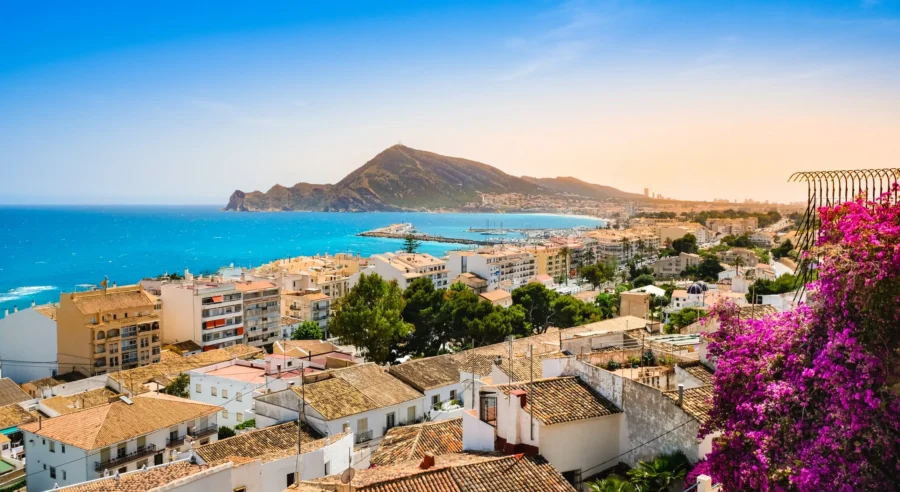
Valencia feels like a big, historic city with a strong cultural pulse. Alicante leans into a slower, coastal rhythm and quick beach access.
Both have solid transport links, but your daily experience will depend a lot on your style and what you want out of city life.
Expat Communities and Lifestyle
You’ll notice the expat crowd shifts between the two. Valencia draws more working-age folks, digital nomads, and families who want city culture plus Mediterranean sun.
Most cluster in neighborhoods like Ruzafa and El Carmen, where coffee shops double as offices and social hubs.
Alicante pulls in an older crowd—retirees, semi-retirees, people who want to live right by the water. Many settle in coastal towns like Jávea or Torrevieja, which have huge foreign resident populations.
If you’re after a super international scene, Alicante province actually has more foreign residents overall. But Valencia city’s still got plenty of expats, just with a more “locals first” vibe.
Climate and Quality of Life
Both cities get that classic Mediterranean climate, but there are small differences. Valencia’s more humid, especially in summer, while Alicante gets more sun and less rain.
Winters are mild in both—outdoor dining almost year-round.
Valencia gives you the Turia Gardens, a massive green park running through the city, so it’s easy to escape the noise without leaving town. Cycling and walking paths make it easy to get around without a car.
Alicante’s all about the sea. Walk from the center to the beach in minutes, and the tram makes it easy to explore quieter coves up the coast. The pace is slower—some love it, others might get restless.
Education and Family Friendliness
Moving with kids? Valencia has more schooling options, including some well-regarded international schools and bilingual programs.
Bigger city means more after-school stuff—sports, music, whatever your kid’s into.
Alicante’s got fewer international schools in the city, but nearby towns fill the gap. The smaller scale means shorter commutes and a tighter school community.
Valencia’s public transport network is more extensive, which makes daily routines easier if you don’t want a car. In Alicante, you’ll probably walk or take the tram, but for some family activities, a car can be handy.
Frequently Asked Questions
Valencia’s bigger, busier, and more cosmopolitan. Alicante leans into its smaller size and easy coastal lifestyle.
Beaches, weather, culture, and the way you get around—these all shape your experience more than you might expect.
What are the key differences in living standards between Valencia and Alicante?
If you like a fast pace, lots of job options, and more neighborhoods to choose from, Valencia checks those boxes. It’s Spain’s third-largest city, so you get more culture, bigger events, and more public services.
Alicante’s smaller, so daily life feels calmer. You can walk almost everywhere, and housing’s often cheaper, but there’s less variety in jobs and nightlife.
Which city boasts better beaches for tourists, Valencia or Alicante?
Alicante’s main beach (Playa del Postiguet) sits right by the city center. You can eat breakfast and be on the sand five minutes later. Hard to top that.
Valencia’s Playa de la Malvarrosa is bigger, with more space to spread out. But you’ll need a tram or bus to get there, so it’s more of a planned outing.
How does the climate compare between Valencia and Alicante throughout the year?
Both cities have mild winters and hot, dry summers. Alicante’s a touch warmer and drier, especially in winter, so you’ll see more sunny days.
Valencia gets a bit more rain in spring and autumn. The city’s green spaces love it, but you might want to pack an umbrella just in case.
Considering family-friendly activities, which is more suitable for children, Valencia or Alicante?
Valencia’s got the City of Arts and Sciences—an aquarium, science museum, IMAX, the works. The Jardín del Turia park is perfect for bike rides and playground stops.
Alicante’s best for the beach, the castle, and the promenade. It’s easy to keep kids happy without long drives or big crowds.
What are the transportation options when traveling from Valencia to Alicante?
The direct train’s the easiest—about 2 hours, comfy, and drops you right in the center.
You can drive down the AP-7 motorway in about the same time, but tolls and parking can be a headache. Buses are cheaper, but they take longer.
How do cultural experiences differ between Valencia and Alicante?
Valencia throws open its doors to a bigger, bolder cultural world—think grand opera houses, sprawling art museums, and those wild, unforgettable Las Fallas celebrations. The city loves to mash up its centuries-old streets with some truly jaw-dropping modern architecture.
Alicante, on the other hand, keeps things a bit closer to home. You’ll wander into cozy museums, get lost in the winding lanes of Santa Cruz, and if you’re lucky, catch the Hogueras de San Juan festival setting the summer ablaze.

